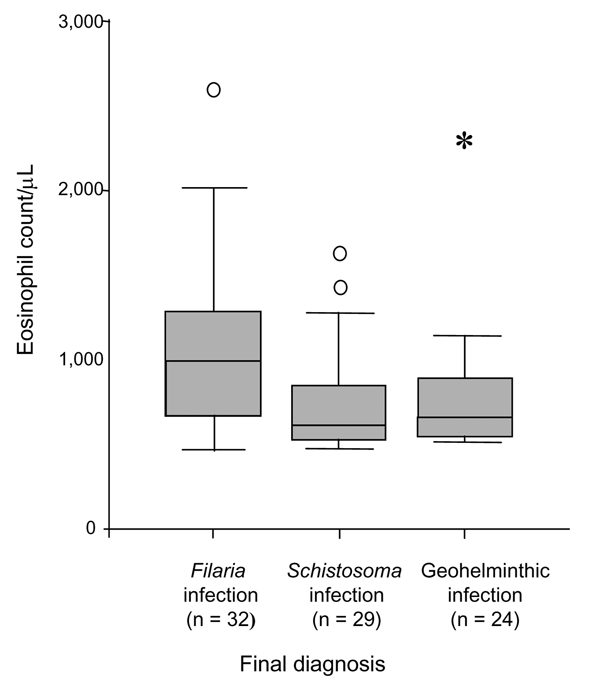Volume 12, Number 10—October 2006
Dispatch
Helminth-related Eosinophilia in African Immigrants, Gran Canaria
Figure 2

Figure 2. Relationship between eosinophil counts and the parasitologic diagnosis. Data are expressed as a box-and-whisker plot showing median, interquartile range (IQ), and extreme values. Circles indicate atypical outliers (values 1.5–3×IQ), and asterisk represents extreme outliers (values >3×IQ).
1These authors contributed equally to this article.
Page created: November 10, 2011
Page updated: November 10, 2011
Page reviewed: November 10, 2011
The conclusions, findings, and opinions expressed by authors contributing to this journal do not necessarily reflect the official position of the U.S. Department of Health and Human Services, the Public Health Service, the Centers for Disease Control and Prevention, or the authors' affiliated institutions. Use of trade names is for identification only and does not imply endorsement by any of the groups named above.